
COMBUSTION EXPLOSION AND SHOCK WAVES
Scope & Guideline
Charting New Territories in Explosions and Shock Waves
Introduction
Aims and Scopes
- Combustion Chemistry and Kinetics:
Research in this area explores the chemical mechanisms and kinetics of combustion processes, including the effects of different fuel compositions, additives, and environmental conditions on combustion behavior. - Explosive Dynamics and Shock Wave Propagation:
This scope includes the study of explosive reactions, detonation wave mechanics, and the interactions of shock waves with various materials, contributing to the understanding of safety and effectiveness in explosive applications. - Materials Synthesis and Characterization:
The journal publishes studies on the synthesis and characterization of new materials, particularly those relevant to high-energy applications, such as metal-based composites and intermetallic compounds, focusing on their performance in combustion and explosive environments. - Numerical and Experimental Approaches:
A significant emphasis is placed on both numerical simulations and experimental investigations that provide insights into combustion phenomena, detonation initiation, and flame dynamics, facilitating a comprehensive understanding of these complex processes. - Environmental and Safety Considerations:
Recent articles reflect a growing interest in the environmental impact of combustion and explosive processes, including studies on emissions, combustion efficiency, and methods to mitigate harmful effects.
Trending and Emerging
- Advanced Materials for Combustion and Detonation:
There is a growing focus on the development and characterization of advanced materials, including nanocomposites and hybrid materials, which enhance combustion efficiency and explosive performance. - Computational Fluid Dynamics (CFD) and Machine Learning:
The integration of CFD and machine learning techniques in combustion studies is on the rise, allowing for more accurate predictions and optimizations of combustion processes and detonation dynamics. - Sustainable and Green Combustion Technologies:
Research into sustainable combustion practices, including the use of alternative fuels and the reduction of emissions, is increasingly prominent, driven by global environmental concerns. - Multi-Phase Combustion Systems:
Emerging studies on multi-phase combustion systems, including gas-solid and liquid-solid interactions, are gaining traction, reflecting the complexity of real-world combustion scenarios. - Shock Wave Applications in Material Processing:
The application of shock waves in material processing and synthesis is becoming a notable trend, highlighting the versatility of shock wave dynamics beyond traditional explosive contexts.
Declining or Waning
- Traditional Solid Propellant Studies:
Research focusing exclusively on conventional solid propellants has decreased, likely due to the rise of new materials and composite propellants that offer improved performance and lower environmental impacts. - Static Detonation Models:
The use of static models for detonation studies has waned as dynamic and computationally advanced approaches gain popularity, reflecting the need for more accurate representations of real-world scenarios. - Low-Energy Combustion Systems:
There has been a noticeable reduction in publications related to low-energy combustion systems, possibly overshadowed by more high-energy and efficient combustion technologies that meet modern energy demands.
Similar Journals
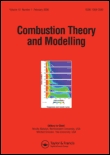
COMBUSTION THEORY AND MODELLING
Igniting Innovation in Energy TechnologyCombustion Theory and Modelling is a pivotal journal for researchers and professionals in the fields of chemical engineering, energy technology, and combustion science. Published by Taylor & Francis Ltd, this journal, with an ISSN of 1364-7830 and E-ISSN 1741-3559, provides a platform for disseminating significant advances in our understanding of combustion processes and their applications. With a solid impact factor, as reflected in its Q2 ranking across multiple categories including Chemical Engineering, Energy Engineering, and Modeling and Simulation, it serves not only to enhance theoretical knowledge but also to bridge the gap between theory and practical applications. The journal spans a wide timeline from 1997 to 2024, ensuring that it covers both foundational studies and cutting-edge research. Situated in the UK, the journal actively invites submissions that contribute to the evolving landscape of combustion science, making it an essential resource for academics, industry professionals, and students keen on exploring the dynamics of energy and fuel technologies.
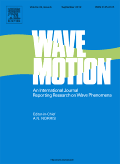
WAVE MOTION
Illuminating the Interplay of Waves Across SciencesWAVE MOTION is a premier scholarly journal published by Elsevier, dedicated to the interdisciplinary study of wave phenomena across various scientific domains. With an ISSN of 0165-2125 and an E-ISSN of 1878-433X, this journal has been a significant contributor to the field since its inception in 1979, continuing to expand knowledge in Applied Mathematics, Computational Mathematics, Modeling and Simulation, and Physics and Astronomy. Located in the Netherlands, WAVE MOTION ranks impressively within the top quartiles (Q2) of its categories, showcasing its influence and relevance, as evidenced by its Scopus rankings: #133 in Applied Mathematics and #51 in Computational Mathematics, among others. Although the journal follows a subscription-based model, its commitment to high-quality research makes it a valuable resource for researchers, professionals, and students alike. As it approaches its convergence years through 2024, WAVE MOTION remains a critical platform for the dissemination of innovative findings and theoretical advancements in wave motion studies.

Journal of the Korean Society of Combustion
Championing Sustainable Combustion PracticesThe Journal of the Korean Society of Combustion, published by the esteemed Korean Society of Combustion, is a pivotal platform that disseminates groundbreaking research in the field of combustion science. With its ISSN 1226-0959 and E-ISSN 2466-2089, this journal serves as a reliable source for both theoretical developments and practical applications pertaining to combustion technologies. As part of the thriving research community in South Korea, the journal plays a crucial role in advancing knowledge on combustion processes, alternative fuels, and emissions reduction technologies. Researchers, professionals, and students alike benefit from the journal's commitment to high-quality publications that foster innovation and collaboration within the interdisciplinary realms of energy and environmental sciences. While currently not an open-access journal, the Journal of the Korean Society of Combustion ensures that its content remains accessible to a broad audience through institutional subscriptions and partnerships, reinforcing its impact in the academic community.
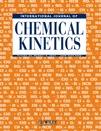
INTERNATIONAL JOURNAL OF CHEMICAL KINETICS
Unraveling the complexities of reaction kinetics.The INTERNATIONAL JOURNAL OF CHEMICAL KINETICS, published by Wiley, is a leading journal that covers significant advancements and fundamental research in the field of chemical kinetics. Established in 1969, this peer-reviewed journal not only emphasizes kinetics in solution and gas-phase reactions but also addresses theoretical approaches and experimental applications in various branches of chemistry including biochemistry, inorganic chemistry, organic chemistry, and physical chemistry. As of 2023, it holds a respectable Q2 ranking in Inorganic Chemistry and Q3 in the other chemistry categories, reflecting its substantial impact on the scientific community. With a commitment to disseminating high-quality research, the journal is an indispensable resource for researchers, educators, and students seeking to deepen their understanding of chemical dynamics. Its compilation of articles and reviews ensures that it remains a cornerstone for innovative studies and discussions within the field.
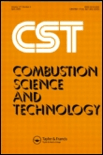
COMBUSTION SCIENCE AND TECHNOLOGY
Exploring the Dynamics of Combustion ScienceCOMBUSTION SCIENCE AND TECHNOLOGY, published by Taylor & Francis Inc, is a pivotal journal in the fields of Chemical Engineering and Chemistry, with a robust history spanning from 1969 to 2024. With an established impact factor and a strong reputation reflected in its Q2 ranking in both Chemical Engineering and Chemistry, this journal serves as an essential resource for researchers and professionals dedicated to the intricacies of combustion processes and energy technologies. The journal also holds commendable rankings in Energy Engineering, Fuel Technology, and Physics and Astronomy, showcasing its interdisciplinary relevance. While currently not an open-access publication, it offers a wealth of knowledge through its meticulously peer-reviewed articles, which are crucial for advancing understanding and innovation in combustion science. With a commitment to promoting rigorous research and fostering scholarly communication, COMBUSTION SCIENCE AND TECHNOLOGY is indispensable for anyone seeking cutting-edge insights into combustion phenomena and their applications in various engineering fields.
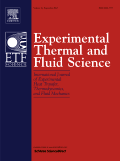
EXPERIMENTAL THERMAL AND FLUID SCIENCE
Transforming experimental insights into engineering excellence.EXPERIMENTAL THERMAL AND FLUID SCIENCE is a prestigious academic journal published by Elsevier Science Inc, dedicated to advancing the fields of thermal and fluid sciences. With a strong focus on innovative experimental research, it plays a crucial role in disseminating new knowledge and techniques across multiple domains, including Aerospace Engineering, Chemical Engineering, Fluid Flow and Transfer Processes, Mechanical Engineering, and Nuclear Engineering. Holding a notable impact factor and ranking in the Q1 quartile across these categories since 2023, the journal is recognized for its high-quality contributions, which appeal to a diverse audience of researchers, industry professionals, and students alike. Additionally, with dedicated coverage from its inception in 1988 to projections extending through 2025, EXPERIMENTAL THERMAL AND FLUID SCIENCE provides a vital platform for sharing advancements in experimental techniques and findings that shape the future of engineering and applied sciences.
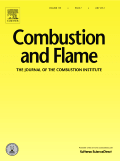
Combustion and Flame
Leading the Charge in Combustion ResearchCombustion and Flame is a premier academic journal published by Elsevier Science Inc, dedicated to advancing the field of combustion science. Since its inception in 1957, this journal has consistently provided a platform for rigorous research and groundbreaking discoveries in the realms of Chemical Engineering, Chemistry, and Energy Engineering, illustrating a significant Q1 ranking across multiple categories, including Fuel Technology and Physics. With an impressive Scopus ranking, comprising the top 10% in fields such as General Physics and Astronomy, and General Chemical Engineering, Combustion and Flame serves as a critical resource for researchers, professionals, and students aiming to explore the complexities of combustion phenomena and their applications. Although it does not offer open access, the journal is known for its comprehensive articles and innovative research papers, fostering scholarly dialogue and the development of emerging technologies. The journal aims to connect researchers globally, ensuring that important findings are shared and disseminated effectively.

Russian Journal of Physical Chemistry B
Connecting researchers through cutting-edge discoveries.Russian Journal of Physical Chemistry B, published by MAIK NAUKA/INTERPERIODICA/SPRINGER, serves as a vital platform for the dissemination of novel research in the field of physical and theoretical chemistry. With an ISSN of 1990-7931 and an E-ISSN of 1990-7923, this journal has established itself in the academic landscape since its inception in 2008, continuing to publish groundbreaking studies that push the boundaries of chemical research through 2024. Ranked in the Q3 category in Physical and Theoretical Chemistry, it holds a Scopus Rank of 139/189, showcasing its significance despite a competitive field. The journal does not currently offer open access but remains dedicated to advancing knowledge and innovation within its niche, fostering collaboration among chemists, researchers, and educators. As a valuable resource for those seeking to stay abreast of the latest developments and theoretical advancements, the Russian Journal of Physical Chemistry B is an excellent choice for professionals and students alike.
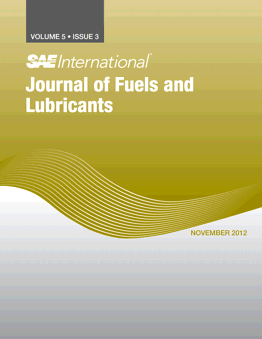
SAE International Journal of Fuels and Lubricants
Innovating for a Sustainable Energy LandscapeWelcome to the SAE International Journal of Fuels and Lubricants, a leading peer-reviewed publication dedicated to advancing knowledge in the crucial fields of fuel technology and lubrication science. Published by SAE International, this journal serves as a vital resource for researchers, industry professionals, and students engaged in the study and application of innovative fuels and lubricants. With an impact factor indicative of its importance, the journal is ranked in the Q3 category for both Fuel Technology and Pollution, highlighting its critical role in addressing global energy and environmental challenges. Covering a range of topics from fundamental research to practical applications, the journal not only contributes to academic discourse but also serves to inform industry practices. Our publication spans the converged years from 2009 to 2024, reflecting a commitment to continuous scholarly contribution. While currently operating under a traditional access model, the journal aims to foster an inclusive environment for discourse in the rapidly evolving fields of energy and environmental science.

Applications in Energy and Combustion Science
Exploring Cutting-Edge Applications in Energy TechnologiesWelcome to Applications in Energy and Combustion Science, a premier open-access journal published by ELSEVIER that has been at the forefront of research since 2020. With the ISSN 2666-352X, this journal is dedicated to advancing the knowledge and application of energy technologies and combustion systems, reflecting a strong commitment to the evolving demands of the field. Based in the United Kingdom and recognized for its robust contributions, it has achieved noteworthy status in the 2023 rankings: a Q1 classification in both Chemical Engineering (miscellaneous) and Fuel Technology, alongside a Q2 standing in Energy (miscellaneous). Researchers will find it a significant platform, with Scopus rankings placing it among the top tiers in various categories. This journal offers an essential resource for professionals and students aiming to stay abreast of innovative developments and applications in the critical areas of energy and combustion, ensuring broad accessibility and dissemination of research findings.